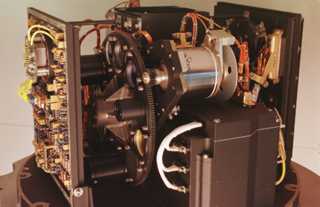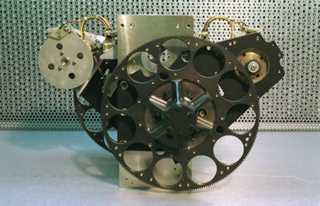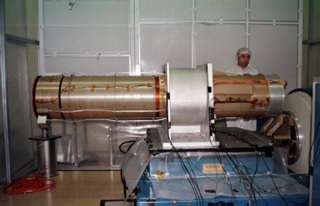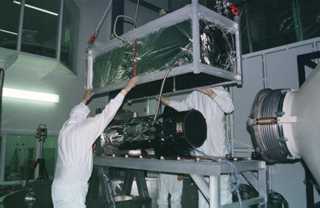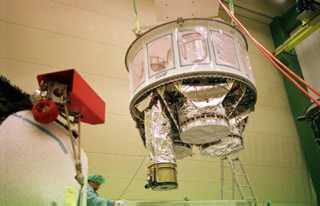|

|
UVOT
(UltraViolet and Optical Telescope)
|
MSSL
will build the UV/Optical Telescope (UVOT) for SWIFT. The UVOT will
be, as far as possible, an exact copy of the XMM-OM instrument. It is
a 30cm diameter modified Ritchey-Chrétien telescope with an f/2.0
primary beam that is re-imaged to f/13 by the secondary. The sky image
is recorded on a photon counting, intensified CCD detector, which operates
at the ambient temperature of the instrument. The detector covers a
field of view of 17-arcmin square with 0.5 arcsec pixels and is sensitive
between 170nm and 650nm. A filter wheel provides broadband energy discrimination
via filters, together with two grisms for low-resolution spectroscopy
and a 4x-image expander for near-diffraction limited imaging. An Instrument
Control Unit (ICU) configures the instrument, provides thermal control
and interfaces with the spacecraft, while a Data Processing Unit (DPU)
intelligently handles the science data.
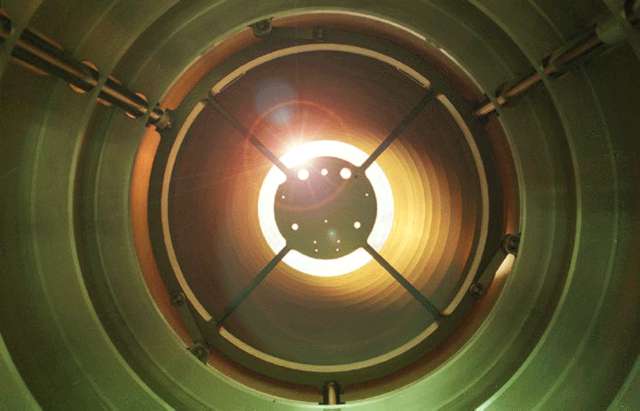
View into
the XMM-OM telescope |
|
The
UVOT is well suited to the task of studying g -ray bursts. Observing
from space, it will benefit from very low sky brightness, excellent
spatial resolution and a zero read-noise detector, making its
limiting sensitivity comparable with a 4m ground based telescope
(a B=24 magnitude star can be detected in 1000s using a white-light
filter). Additionally it provides access to the UV region that
is inaccessible from the ground.
For
1<z<5, the redshifted Lyman edge falls within the UVOT bandpass,
producing a sharp cut-off in flux shortward of the edge. This
edge can be detected by 6-band photometry with the UVOT yielding
z to an accuracy of roughly 0.1 for a 20 th magnitude star (1000s
exposures per filter assumed). For bright bursts (e.g. GRB990123)
the redshift can be determined even more accurately by using a
Grism to generate a dispersed spectrum.
|
|
The UVOT will also measure the position of the UV/optical afterglow
to an accuracy of 0.3 arcsec or better with respect to field stars,
allowing the position of the burst within the host galaxy to be
determined. UVOT will provide an optical finding chart of each
burst field within 300 seconds of the initial trigger.
|
| Images
of the XMM-OM at various stages during the manufacture and test
programmes. |

|
Further
Information:
|

|
| |
• Click
here to view Swift
team photo
|
• Click
here to view images of Swift UVOT
delivery
|
• Click
here for a link
to NASA's SWIFT homepage
|
• Click
here for a link to the XMM-Optical
Monitor homepage
|

[ Home | Research
| Engineering | General
| Teaching
| Outreach
| Projects | Jobs
| MSSL only | Search
| UCL ]
Last modified Wednesday, December 11, 2002 2:09 PM www@mssl.ucl.ac.uk
Copyright © 2002 MSSL.
|



